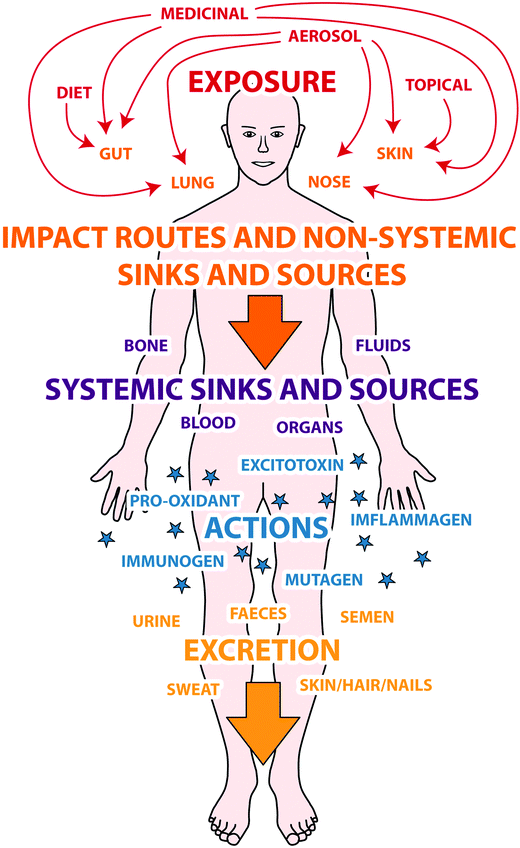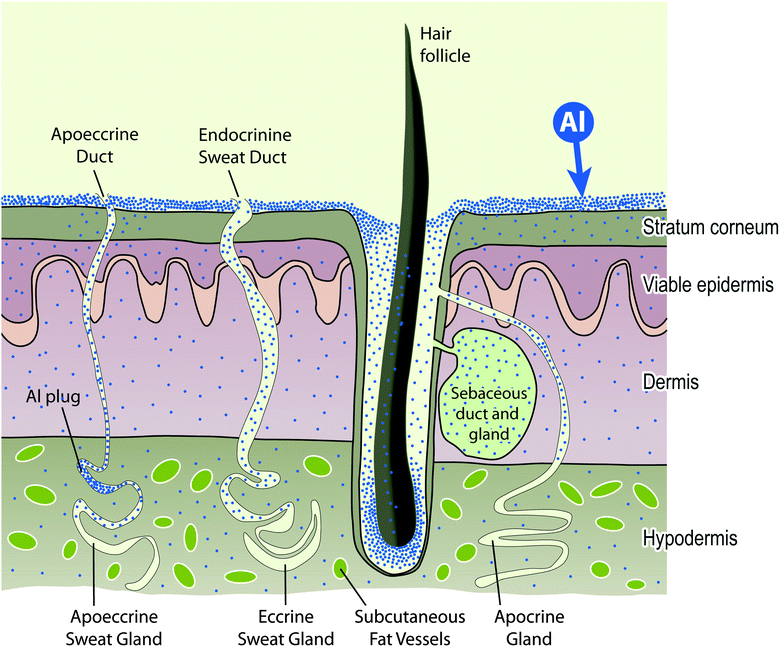
History
Source
Aluminum comes from many exposure types including:
- cookware
- cans
- antacids
- anti-perspirant
- drying agents used in baking powder, cocoa, salt
- bleached flour (as a bleaching agent)
- cosmetics
- paint
- water
Biotransformation/toxicokinetics
Absorption– Dependent upon other minerals in the body as well as parathyroid hormones. Aluminum can be absorbed orally, through the respiratory epithelium, or through the skin.
Aluminum is stored mainly in the lungs, liver, thyroid, bone and brain.
The majority of aluminum in the blood is bound to plasma proteins. Extensive evidence indicates that aluminum penetrates the blood-brain barrier and is excreted in breast milk. Most aluminum is excreted in the urine and feces.

Carcinogenicity
Aluminum is not listed by the IARC as a carcinogen. However, the production of aluminum is classified by the IARC as Class 1, meaning “Carcinogenic to Humans.”
Mechanism of Action
Antiperspirant- Aluminum works as an antiperspirant by decreasing the activity of sweat glands.
 Further explanation of this diagram can be found here.
Further explanation of this diagram can be found here.
Effect Of Aluminum On Other Nutrients
Iron- High hair aluminum levels are often associated with high hair iron levels.
Phosphorus- Aluminum hydroxide gel can greatly reduce blood phosphate levels, which can lead to osteoporosis, muscle aches, and weakness. However, this effect is due to the binding action of hydroxide on phosphorus, not the aluminum per se.
Effects Of Other Nutrients On Aluminum
Iron Binding Agents- The iron chelating agent deferoxamine appears to chelate aluminum.
Fluoride- Fluoride competes with aluminum for absorption in the gut.
Vitamin C- High-dosages of ascorbic acid can be used as a chelating agent in cases of aluminum toxicity.
Target organs
Hypoparathyroidism
-Aluminum may trigger a feedback mechanism affecting the parathyroid glands.
Kidney Dysfunction
-Fatty degeneration of the kidney can result from aluminum toxicity.
Liver Dysfunction
-Fatty degeneration of the liver can result from aluminum toxicity.
Neuromuscular Disorders
-There is a possible link between aluminum and Parkinson’s disease.
Signs and symptoms of toxicity
- Early
- flatulence
- headaches
- colic
- dryness of the skin and mucous membranes
- tendencies for colds
- burning pain in the head relieved by food
- heartburn
- aversion to meat
- Late
- paralytic muscular conditions
- loss of memory
- mental confusion.
Treatments
Deferoxamine mesylate– given to help eliminate aluminum from your body using a process referred to as chelation.
Aluminum powder in the eyes or on the skin should be rinsed with water or soapy water respectively.
It is recommended to eliminate the use of products known to include aluminum such as anti-perspirant and antacids.
Biomarkers
Blood
A debate currently exists concerning the value of blood aluminum levels to determine aluminum status. It is clear, however, that blood aluminum determinations fail to accurately reflect total body burden of aluminum. This is because brain, lung and often bone measurements reveal much higher levels of aluminum than are found in the blood.
Hair
Hair levels of aluminum have been shown to correlate well with bone levels of aluminum.
Essentiality and deficiency
There is limited evidence that aluminum is essential to human function and equally limited research suggesting that aluminum deficiency inhibits growth.